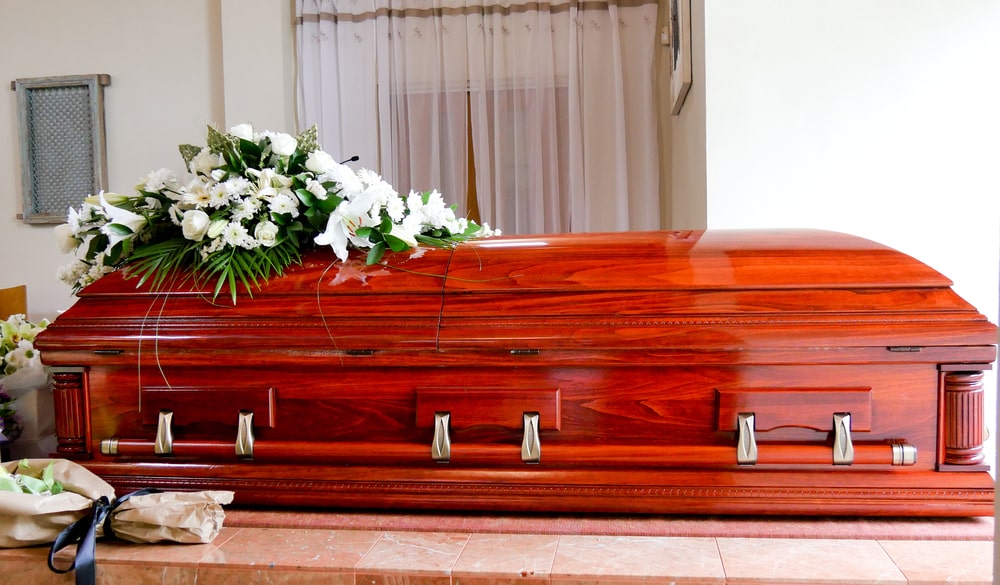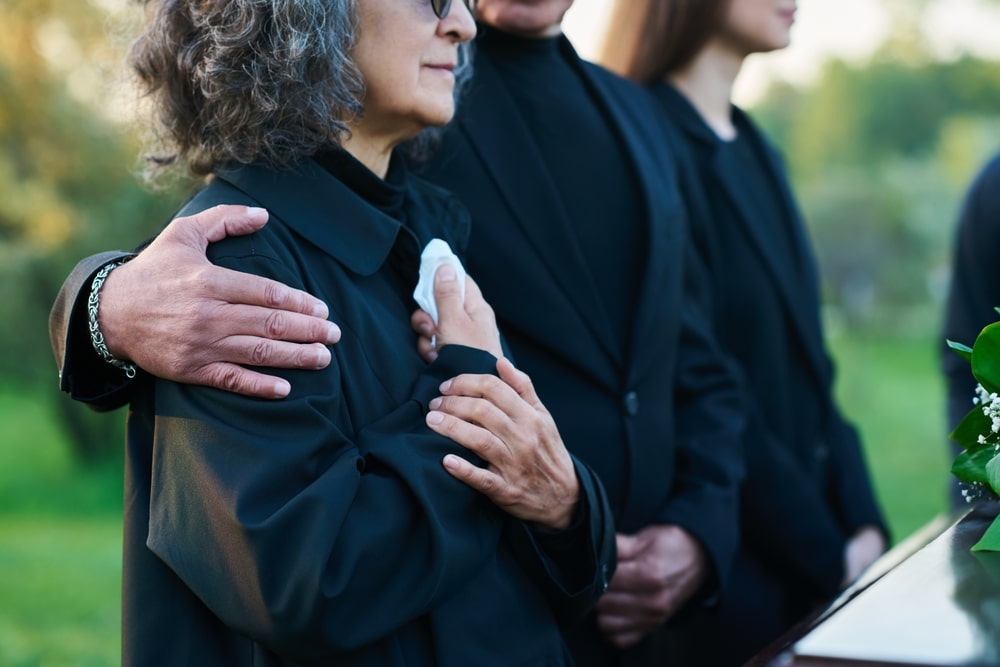
Good dads are strong pillars, men we can count on, lean on, and depend on throughout our lives. For those lucky enough to have an outstanding dad, his loss can stir up many emotions, including sadness, shock, confusion, or even regret. These emotions are all normal and natural after the death of a loved one.
If you are grieving the loss of a father, take comfort in these 10 poems that beautifully express the special relationship between a father and his children. And as you read them, take note of your own feelings. Write down your thoughts. Pay attention to the ones that bring tears to your eyes. And above all, remember your dad and honor his place in your life and his part in shaping who you are today.
1. Special Hero (by Christina M. Kerschen)
When I was a baby,
you would hold me in your arms.
I felt the love and tenderness,
keeping me safe from harm.
I would look up into your eyes,
and all the love I would see.
How did I get so lucky?
You were the dad chosen for me.
2. Dad (by Susan Smith)
To me, Dad, you’re everything
I cannot begin to say,
You’ve loved, cared, and looked out for me
You’ve made me who I am today.
Dad, you’ve always been understanding
and showered me with concern,
You’re my knight in shining armor
You’re my dad and best friend.
3. God Made a Father (by Abigail Stott)
God once made a father
his best one of all
he was smart loving and determined
to come when his kids called
This father could be serious
he would sometimes get mad
but he was forgiving
when you did something bad
This father could be silly
he would tell many jokes
he could be quite annoying
when he gave tickles and pokes
God gave him to someone
but who could it be?
This very lucky person
turned out to be me.
4. Only a Dad (by Edgar Guest)
Only a dad, with a tired face,
Coming home from the daily race,
Bringing little of gold or fame,
To show how well he has played the game,
But glad in his heart that his own rejoice
To see him come, and to hear his voice.
Only a dad, with a brood of four,
One of ten million men or more.
Plodding along in the daily strife,
Bearing the whips and the scorns of life,
With never a whimper of pain or hate,
For the sake of those who at home await.
Only a dad, neither rich nor proud,
Merely one of the surging crowd
Toiling, striving from day to day,
Facing whatever may come his way,
Silent, whenever the harsh condemn,
And bearing it all for the love of them.
Only a dad, but he gives his all
To smooth the way for his children small,
Doing, with courage stern and grim,
The deeds that his father did for him.
This is the line that for him I pen,
Only a dad, but the best of men.
5. Dads Show Us the Way (by Harrison Beslow)
Dads are the guiding lights that lead the way,
Raising kids to be strong, brave, and never stray,
Teaching us to try hard, and put ourselves to the test,
To see the funny side of things, and do our best.
Dads inspire us to be optimistic and kind,
To find our mission in life, and always keep in mind,
That success comes to those who never give up,
Who work hard and never hold a grudge.
With patience and love, dads show us the way,
To live in the here and now, and seize each day,
To face life’s challenges with grace and ease,
And to never ever give up on our dreams.
Dads teach us values that shape our lives,
To be kind to others, and treat them with respect and thrive,
Their love and guidance, we’ll cherish forevermore,
For dads play a crucial role in the world, that we can’t ignore.
6. My Dad, My Teacher (by Reese Carlington)
From the very start, my dad’s been there,
Teaching me to ride my bike without a care.
When my toys broke, he fixed them with a grin,
And when I needed help, he always pitched in.
Through every scrape and tear, he wiped away my fears,
Making everything okay, and drying up my tears.
He’s been my rock, my guide, my hero, all in one,
And I’m grateful for everything he’s done.
He’s taught me to be kind, and to spread my wings,
And he’s always been there to help with anything.
With his patience and love, he’s helped me through it all,
And I’m grateful for his support, big and small.
I’m lucky to have such an awesome dad,
And I’m grateful for all the fun we’ve had.
He’s the best friend I could ever wish for,
And I’ll always love him more and more.
7. As We Look Back (by Clare Jones)
As we look back over time
We find ourselves wondering
Did we remember to thank you enough
For all you have done for us?
For all the times you were by our sides
To help and support us
To celebrate our successes
To understand our problems
And accept our defeats?
Or for teaching us by your example,
The value of hard work, good judgement,
Courage and integrity?
We wonder if we ever thanked you
For the sacrifices you made.
To let us have the very best?
And for the simple things
Like laughter, smiles and times we shared?
If we have forgotten to show our
Gratitude enough for all the things you did,
We’re thanking you now.
And we are hoping you knew all along,
How much you meant to us.
8. Silent Strong Dad (by Karen K. Boyer)
He never looks for praises
He’s never one to boast
He just goes on quietly working
For those he loves the most
His dreams are seldom spoken
His wants are very few
And most of the time his worries
Will go unspoken too
He’s there…A firm foundation
Through all our storms of life
A sturdy hand to hold to
In times of stress and strife
A true friend we can turn to
When times are good or bad
One of our greatest blessings,
The man that we call Dad
9. Dear Dad (by Anonymous)
You mean so very much to me,
And I want you to know
That you are always in my heart,
No matter where I go.
You’re always giving, always there
To help in any way;
The loving things you’ve done for me,
I never could repay.
I can’t imagine what I’d do
Without the love you give.
I’ll treasure your sweet heart of gold
As long as I shall live.
10. Where Would I Be Without You (by Corey Mitcherson)
My dad, my hero, always by my side,
From the moment I was born, he has been my guide.
He cared for me as a baby, taught me to crawl and walk,
And as I grew older, he taught me to talk.
He taught me to throw and catch, ride a bike and drive a car,
And to never give up, no matter how hard things are.
Without my dad, where would I be?
Lost and unsure, I don’t want to even think.
He has always been there, through thick and thin,
Supporting me, and helping me to win.
His guidance and faith in me, have given me the strength,
To overcome all obstacles, no matter the length.
He taught me about The Lord, and how to live a life of grace,
To be kind and compassionate, and to always have faith.
My dad, my hero, I’m grateful for all you’ve done,
And I thank the heavens above, for giving me the best one.

May these poems bring you comfort and help you remember your dad with love and tenderness. As you continue on your grief journey, make sure you talk with family and friends about what you’re feeling. Find ways to express yourself. Share your favorite memories. As you engage with your emotions and process your feelings of grief, you will move toward healing and reconciliation.
For more grief tips, check out these articles:











































































